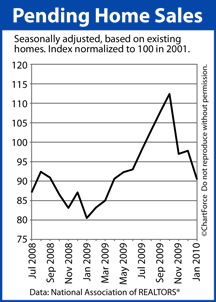A 45-story condo tower — in Federal Way?
That’s the plan longtime Seattle developer Steve Smith and two Korean-American partners unveiled Wednesday.
The Sky Hotel & Residences would be the tallest building between downtown Seattle and downtown Portland, said Patrick Doherty, economic-development director for the low-rise suburb of 87,000 residents.
“It would definitely be the exclamation point on our skyline,” he said.
The $225 million project would be built with money from foreign investors who, under an obscure federal program, can parlay investment in certain neighborhoods into permanent U.S. residency, or “green cards.”
An application by the city and the Sky project’s developer, Twin Development, to include downtown Federal Way in the program was approved by U.S. Citizenship and Immigration Services last fall.
Without that designation and the inducement of green cards, the proposed condo tower wouldn’t have penciled out, said Smith, Twin’s co-manager.
He said he and his partners, Luke Hwang and Pom Kwak, have been pitching the project to potential investors for some time. “It’s gone very well,” he said, but would not provide details.
Federal Way has a large Korean-American population, and the developers expect most of the investors would be Koreans, Smith said.
Investors later would have the option of converting their investment into ownership of a unit in the building, he added.
The Sky Hotel & Residences would be built on 2 acres on 23rd Avenue South where a Mexican restaurant once stood. The site is close to Interstate 5’s South 320th Street interchange and the Federal Way Transit Center.
The project would include a 120-room hotel, about 24,000 square feet of restaurants, shops and office space, and 400 condos of about 1,000 square feet each. They would sell for $500,000 to $600,000.
The developers hope to break ground next spring and complete construction in 2014, Smith said.
Twin doesn’t own the land yet and hasn’t filed permit applications. But Smith said the property is under contract, and the developers have submitted pre-application materials to the city.
There have been few new condo starts since the economy sank and the real-estate and credit markets collapsed two years ago. Recently completed high-rise, high-end condo towers in downtown Seattle and downtown Bellevue have had trouble attracting buyers.
But “the market may look very different in four or five years,” said Dean Jones, of the condo-marketing firm Realogics, who is consulting on the Sky project.
Twin first approached Federal Way about the project a year ago, said Doherty. It’s in keeping with the city’s long-stymied efforts to reshape its sprawling center into a higher-density, less auto-centered downtown, he said.
“We’re a designated urban center,” Doherty said, “but we haven’t really gotten there yet.”
Federal Way’s tallest building now stands just nine stories.
The federal program under which the Sky project is being marketed to foreign investors is known as EB-5. It grants would-be immigrants residency if they invest at least $500,000 in a project that creates at least 10 jobs in a designated “regional center” targeted for economic growth.
In Seattle, developer Henry Liebman has used the EB-5 program to attract more than $150 million in foreign investment to the Sodo District, where he has acquired more than 40 acres.
Liebman also has won “regional center” designations for Everett, Tacoma and Lakewood.
Federal Way’s regional-center application was supported by Gov. Chris Gregoire, among others. “It is imperative that additional, creative sources of redevelopment financing be found,” she wrote last year.
Smith, Twin’s co-manager, has built more than 1,300 apartments and condos in the Seattle area over a 20-year career, according to his company’s Web site.
He also has obtained permits for 2,000 more units, then sold the projects to other developers to build.
The Sky project is his biggest undertaking yet, he said.
There is little, if any, market for high-end condos in Federal Way now.
The median price of condos sold in Southwest King County last year was $150,500, according to the Northwest Multiple Listing Service.
Of 349 units sold in 2009, just three fetched more than $500,000, where the Sky project’s prices would start.
“I don’t know of anyone who would pay that kind of money to live in that area,” said James Stroupe, a condo specialist at Windermere Real Estate in Seattle.
“But if you’re sitting in Singapore with lots of money, this gets you a door into the country. It’s very intriguing.”
Source: Seattle Times, Eric Pryne (02/17/2010)
Filed under: First Time Home Buyer, Real Estate Investor, Seattle, Uncategorized | Tagged: Business, Economy, Home Buyers, Home Sales, Investing, Investor, King County, Real Estate, Real Estate Investor, Real estate pricing, Seattle Real Estate, WA Real Estate | Leave a comment »



![Reblog this post [with Zemanta]](https://i0.wp.com/img.zemanta.com/reblog_e.png)